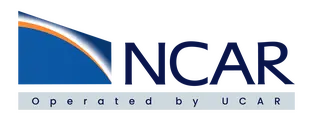Water vapour adjustments and responses differ between climate drivers
To Access Resource:
Questions? Email Resource Support Contact:
-
opensky@ucar.edu
UCAR/NCAR - Library
| Resource Type | publication |
|---|---|
| Temporal Range Begin | N/A |
| Temporal Range End | N/A |
| Temporal Resolution | N/A |
| Bounding Box North Lat | N/A |
| Bounding Box South Lat | N/A |
| Bounding Box West Long | N/A |
| Bounding Box East Long | N/A |
| Spatial Representation | N/A |
| Spatial Resolution | N/A |
| Related Links | N/A |
| Additional Information | N/A |
| Resource Format |
PDF |
| Standardized Resource Format |
PDF |
| Asset Size | N/A |
| Legal Constraints |
Copyright 2019 Author(s). This work is licensed under a Creative Commons Attribution 4.0 International license. |
| Access Constraints |
None |
| Software Implementation Language | N/A |
| Resource Support Name | N/A |
|---|---|
| Resource Support Email | opensky@ucar.edu |
| Resource Support Organization | UCAR/NCAR - Library |
| Distributor | N/A |
| Metadata Contact Name | N/A |
| Metadata Contact Email | opensky@ucar.edu |
| Metadata Contact Organization | UCAR/NCAR - Library |
| Author |
Hodnebrog, Ø. Myhre, G. Samset, B. H. Alterskjær, K. |
|---|---|
| Publisher |
UCAR/NCAR - Library |
| Publication Date | 2019-10-17T00:00:00 |
| Digital Object Identifier (DOI) | Not Assigned |
| Alternate Identifier | N/A |
| Resource Version | N/A |
| Topic Category |
geoscientificInformation |
| Progress | N/A |
| Metadata Date | 2025-07-11T19:24:50.961390 |
| Metadata Record Identifier | edu.ucar.opensky::articles:22912 |
| Metadata Language | eng; USA |
| Suggested Citation | Hodnebrog, Ø., Myhre, G., Samset, B. H., Alterskjær, K., Andrews, T., Boucher, O., Faluvegi, G., Fläschner, D., Forster, P. M., Kasoar, M., Kirkevåg, A., Lamarque, Jean-François, Olivié, D., Richardson, T. B., Shawki, D., Shindell, D., Shine, K. P., Stier, P., Takemura, T., Voulgarakis, A., Watson-Parris, D.. (2019). Water vapour adjustments and responses differ between climate drivers. UCAR/NCAR - Library. https://n2t.org/ark:/85065/d7vd72mk. Accessed 14 October 2025. |
Harvest Source
- ISO-19139 ISO-19139 Metadata

